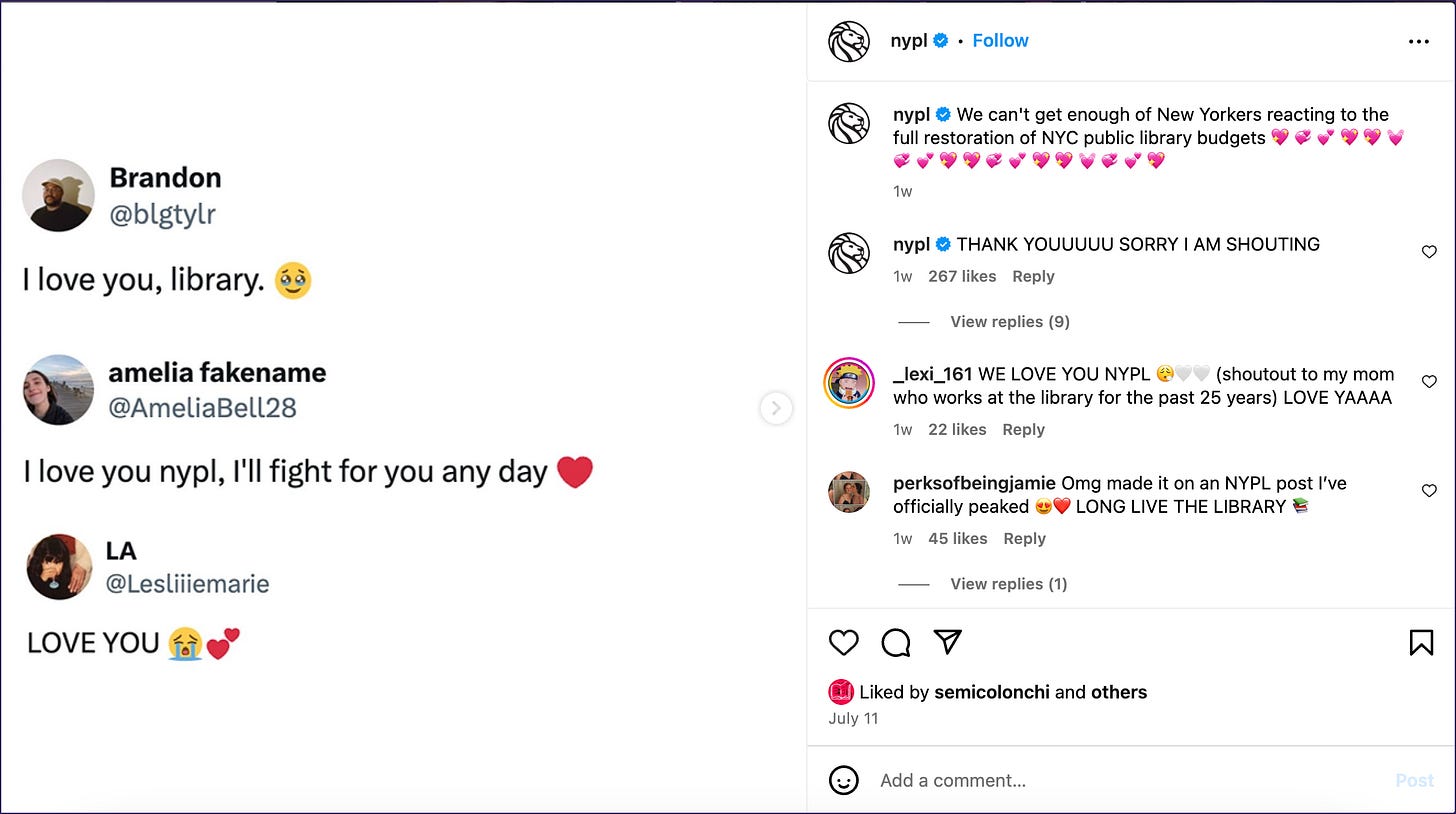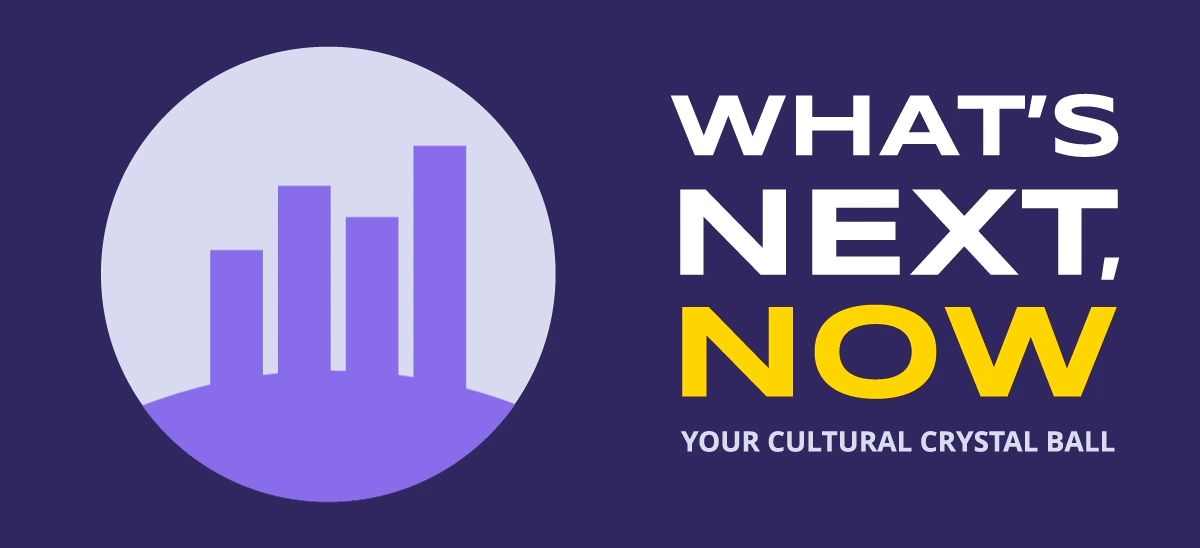What's Next, Now: July 2024
This month, our crystal ball predicts hotter and hotter summers, a focus on fertility, a social media health crisis, and more.
You probably don’t need a news headline to tell you it’s yet again the hottest summer ever — just step outside your front door. According to data from the EU’s Copernicus Climate Change Service, this June was the 13th consecutive month to break a global heat record, meaning we’re well on our way to topping last year’s record-setting summer temperatures. This month, excessively high temps took over most of the U.S., with 27 states issuing heat advisory warnings. The heat wave took down important infrastructure including commuter rail lines and put over 100 million Americans in danger: Excessive heat is the deadliest extreme weather event, killing more people than any other natural disaster.

Continually rising temperatures are setting the standard for a new normal, and efforts are being made to prepare accordingly. For example, the Occupational Safety and Health Administration (OSHA) is attempting to pass the first-ever major regulation aimed at preventing heat-related deaths on the job. And on a very different kind of jobsite, Olympians are spending weeks on “heat training” to prepare to compete in the hottest Games yet.
Businesses across industries are also adjusting to the heat — and exploring new market opportunities. For some, rising temperatures means a chance to innovate and offer solutions that address previously untapped challenges. Take window air conditioners as an example, an industry currently getting its glow-up with a boom in stylish and sustainable (and usually pricey) units. For others, it could mean rethinking entire infrastructure systems and healthcare practices. Right now, no idea is too out there when it comes to addressing potentially catastrophic temperature increases — for instance, maybe putting data centers in space is the solution to reducing the centers’ massive energy demands and heat-inducing carbon footprint.
You might have missed the question about child care affordability from last month’s presidential debate — after all, Biden and Trump ended up talking more about golf. But the question was included due to a nearly 15,000-signature petition championed by Moms First, an organization aiming to address what they see as “a national child care crisis.” There’s ample evidence to support their case: Recent polling indicates that ensuring access to affordable child care is a bipartisan issue, with 89% of all voters looking to the presidential candidates for a plan to help working families afford child care.

Recently, the situation has been worsening for those offering child care resources. The expiration of federal support for the child care industry late last year dealt a fierce blow to the professional systems of support families rely on across the country. And, schools and child care centers are still reeling from the financial shocks of the COVID-19 pandemic.
It’s clear that parents are at an inflection point when it comes to making decisions related to caring for their children. If child care costs remain this high, more and more parents may be forced to sacrifice their careers to manage their expenses. At a time when more women are working than ever before, they are also disproportionately departing the workforce due to skyrocketing care expenses, especially women without college.
In lieu of robust national support programs, businesses and local initiatives have an opportunity to bridge the gap. Offering childcare benefits to employees is shown to help reduce absenteeism, improve productivity, and enhance employee retention. Many companies are trying to get ahead of the curve: more than half of surveyed American businesses aim to prioritize child care benefits this year. Paying for childcare, remote work options, and flexible hours are all in high demand. While not every business will be equally equipped to offer support to parents, organizations should consider reviewing their corporate benefits package and identifying opportunities to help.
Can women really have it all? As we mentioned, more women are working than ever before: The amount of women working or seeking work has nearly doubled since 1960. But, as a result, more women than ever are also needing to find ways to balance their professional aspirations with the prospect of having children at all (let alone affording their care).
As young people wait longer to have children, fertility options that offer more choice and flexibility are increasing in demand. Since 2015, the amount of large companies covering egg freezing as part of their health benefits increased from five percent to nearly twenty percent. And for good reason — 63% of Americans believe companies should offer some form of fertility benefits to employees.
From egg freezing to cord blood banking, fertility services marketed toward women have often promised a utopian vision: With some initial financial investment, you’ll have access to the healthy, happy family of your dreams, on your terms. But as this industry continues to boom, women’s experiences aren’t lining up with the expectations these companies have set. Critics say the industry isn’t appropriately regulated, and these services come with an incredibly hefty price tag.
As economists fret about declining fertility rates, scrutiny surrounding these technologies will likely increase. Missteps and errors in the assisted fertility industry have, at times, been kept under wraps — but more awareness and conversation may cast a harsher light on these companies. There’s also opportunity in the space to offer transparent, equitable care: Historical data shows white women are far more likely to freeze their eggs than any other racial group.
With the bombshell transition in Democratic Presidential nominees this past weekend, both child care and the reproductive industry could receive more attention on the national stage. With a woman candidate as the presumptive Democratic nominee, we’ll have our eyes on how Kamala Harris may address these issues in her platform.
This summer’s hottest accessory? A book (or a decked-out Kindle) in your hand.
Since the trend first started catching on in 2020, TikTok’s “BookTok” has driven a revolution in reading for Gen Z and millennials. BookTok’s commercial power is massive: The hashtag-turned-movement has spawned a vast online community of readers and rocketed the market for books to new heights. BookTok’s fervor spurred an entirely new market for romance-only bookstores — over the last two years, the U.S. went from having only two to more than 20. It’s also pushed Amazon’s Kindle e-reader to double-digit growth for two years and counting. It even revived Barnes & Noble.

As the influence of BookTok expands, libraries are also getting their turn in the spotlight. Combining Gen Z’s love of “underconsumption” with today’s economic realities, library audiences are growing steadily, driven by Gen Z and millennial readers. After New York Mayor Eric Adams proposed large cuts to the New York Public Library budget, a massive campaign emerged to protect the library’s funding showing just how powerful the book-loving community can be. A record 174,000 letters of support were sent to City Hall, and the Library’s hashtag #NoCutsToLibraries trended nationwide. And it worked: the New York Public Library won back all $58.3 million of its funding.

While the book-loving trend has been growing for the past few years, what makes today's moment different is an embrace of the analog side of reading. Reading is popular again, but what’s really cool is an old-school print book. The print book as an accessory gives the impression of luxury and leisure in an otherwise less-than-luxurious world (see: the other trends in this report!), and brands are taking the opportunity to associate themselves with these aesthetics. In June, luxury brand and cool-girl favorite Miu Miu launched a series of pop-ups featuring a curation of literary classics for its Summer Reads campaign, the start of what would soon be dubbed “Book Girl Summer.” This back-to-basics approach to signifying less-than-basic tastes isn’t limited just to reading, and we expect to see continuing to catch on in other areas.
Over the past few years, anxiety has become a defining feature of American society. Constant exposure to information overload, economic instability, and global crises has led to widespread unease, especially with younger generations. While there are several factors that contribute to the rising mental health crisis, it's clear that social media plays a significant role in this phenomenon. Teens spend an average of nearly five hours daily on social platforms, but research suggests that even just 30 minutes a day can negatively impact mental health.
For some, social media is a welcome escape after a long day, offering laughs, advice, and a way to unwind. But, like most forms of escapism, there's a downside. Social media also amplifies negativity, spreading trends that harm consumers' mental and physical health.
Take TikTok, for example. This past month, a debate erupted about sunscreen's effectiveness after a series of videos went viral claiming the chemicals in the product do more harm than good for your skin. In a snowball effect, the narrative took off, fooling many consumers into thinking they no longer needed to use sunscreen to protect themselves. This is just one of many trends that go viral despite lacking a solid foundation of truth. On social media especially, it can be hard for consumers to distinguish fact from fiction, which can directly impact their mental well-being.
As misinformation fuels the mental health crisis, there's an ongoing debate about who should be the one to set the record straight on social media platforms. There is an opportunity for brands and thought leaders to step into the noise of social media and solidify themselves as a trusted voice. Amidst the sunscreen controversy, healthcare institutions joined the conversation and offered professional insights in order to help consumers feel more informed on the topic — now’s the time for brands to do more of the same.
Could Kamala Harris’s meme-ability catapult her to the presidency? Gen Z seems to think so.
The fallout continues after the CrowdStrike outage, including cybersecurity concerns and mounting pressure for airlines.
We’ve got our eyes on three top trends for this hot summer season: DTC brands grappling with an in-person presence, singles’ resistance to dating apps and the desire to meet IRL, and tourists looking for experiential travel opportunities. Download our 2024 Summer Trend Report to learn more.
Want to hear more? Explore the Tier One blog, TOP TALK, for the latest digital marketing trends, tips, and insights.
Copyright © 2024 Tier One Partners is a women-owned full-service PR, content, and digital marketing agency. We work with innovators in B2B and B2C technology, digital healthcare, financial services, energy tech, and manufacturing to develop award-winning creative, data-driven strategies that propel them to industry leader status. From day one, we’re committed to earning our clients’ trust, sharing their vision, and embedding their purpose into everything we do. To learn more, visit wearetierone.com.















